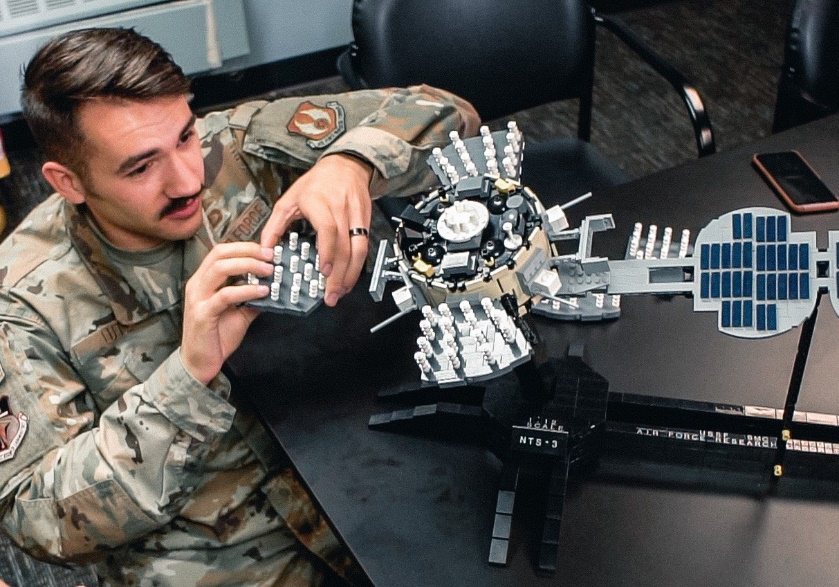Officials overseeing a promising new satellite venture warned this week that Ligado Networks could jeopardize the future of next-generation positioning, navigation, and timing alongside the current GPS enterprise.
“As we interface with our [Air Force headquarters] staff counterparts, the message we communicate is basically, ‘Well, we are going to be collateral damage if this moves forward,’” Arlen Biersgreen, Navigation Technology Satellite-3 program manager at the Air Force Research Laboratory, told Air Force Magazine on Sept. 16. “GPS is going to be harmed, and certainly the work that we’re doing will be harmed as well.”
The Space Force’s NTS-3 program is an experimental effort to offer more reliable, accurate location data via satellites that complement GPS. It is one of three “vanguard” research projects into which the Department of the Air Force is throwing extra focus and resources because of the value it could provide to the U.S. as a full-fledged program. The first satellite will launch in late fiscal 2022 for a yearlong trial run.
“It’s not clear Ligado will get clearance to proceed until after the NTS-3 mission,” L3Harris spokesperson Kristin Jones said. “The capabilities we demonstrate would certainly be impacted down the road when they are part of the operational constellation, but whether the NTS-3 experiment itself is impacted is anyone’s guess at this point.”
NTS-3 would transmit its signal using the L-band of the electromagnetic spectrum, near a part of the spectrum where Ligado recently won approval for a network of 5G wireless and Internet-of-Things services.
The Pentagon strongly objects to the Federal Communications Commission’s decision in favor of Ligado, saying the company’s neighboring technology will drown out GPS signals. That would hurt ATMs, car navigation systems, Garmin watches, and anything else that relies on GPS data to pinpoint location and time on Earth, DOD argues.
GPS satellites also host sensors that detect, locate, and report nuclear explosions as part of the Nuclear Detonation Detection System.
Ligado’s work would overpower NTS-3 in the same way as it may GPS satellites, Biersgreen said.
Joe Rolli, head of PNT business development at satellite builder L3Harris, said the company is still figuring out how a future NTS-3 constellation might avoid the potential signal interference that has sparked arguments on Capitol Hill and across federal agencies.
“They’re all looking at that to make sure,” Rolli said. “How they’re mitigating, I can’t answer that right now. But I know we have all the experts from both the government and our technical teams collaborating to make sure that that risk is understood.”
Ligado argues its transmissions will not be powerful or close enough to hurt navigation signals. DOD is fighting to get the company’s plans revoked.
“The FCC’s unanimous, bipartisan order in the Ligado proceeding is the culmination of a careful and thorough analysis by the federal government’s communications experts,” Ligado wrote in July. “It is thoughtful, grounded in science, and includes several strict conditions that ensure Ligado’s operations protect GPS and are squarely in the public interest.”
